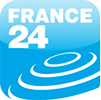Despite declaring its independence from Somalia in 1991, Somaliland has yet to gain international recognition. In addition, it has been hit by a severe drought in the last three years. Read this, our Reporter’s notebook, to find out more.
When you arrive in the city of Hargeisa, you land in a country that does not exist. More than 3 million people live here but no other nation recognises it. Somaliland proclaimed its independence in 1991 after a bloody civil war with the rest of Somalia. Since then it has managed to hold democratic elections and bring about peace and stability.
But because it is not recognised, it cannot access funds from major donors like the World Bank and the IMF. The paradox is that it is far more stable and safe than Somalia, which has received millions of euros in aid money from the West.
There are no old buildings in Hargeisa: it was razed by Somalia in 1988 to destroy the insurgency. We have come here to report on the terrible drought that began three years ago. The government blames global warming. When the camera is off some residents say the authorities’ response was sometimes poorly coordinated. One problem is that half the budget goes (with success) to maintaining security. For example, all foreigners travelling in Somaliland must have an armed escort made up of two policemen. Somaliland is eager to show that it is safe – unlike Somalia, which is regularly hit by Al-Shabaab jihadist attacks.
We head for the town of Burao, a four-hour drive from Hargeisa. For most of the journey we observe vast swathes of dry landscape and a few camels. After you reach the port of Berbera; you go up into the mountains, and then on to Burao. Doctor Yusuf Dirir Ali shows us inside the hospital. “Unfortunately two kids died last night,” he sighs. In the hospital we see dozens of emaciated children, victims of malnutrition. One 50-year-old grandmother holding a baby tell us: “I’ve never seen such a drought in my lifetime.” It’s a comment that we will hear many times during our 10-day stay in Somaliland.
In the rural areas outside Burao several IDP (internally displaced people) camps have been set up. They are made up of families who have fled the driest regions and gathered outside villages where they can receive aid. One devastated woman tells us that because of the drought she lost her 3-year-old daughter. The camp is in the village of Yagori where, for instance, Save The Children transfers about $100 (€86) a month to the poorest recipients’ mobile phones.
In Ilcarno, another hamlet, Degmo, who says she’s 80, explains that she had 185 goats, and that only eight are still alive. Like most people in Somaliland, she used to sell her animals in Burao, one of the largest livestock markets in East Africa. When we go there everyone tells us how it used to be so much busier before the drought. Today a handful of camels and some goats are on sale. The shortage of animals means prices have gone up by 20 percent.
The livestock sold in Burao is then transported to the port of Berbera where it is exported to the Gulf countries. Berbera has the same sleepy charm and Ottoman architecture as Massawa in Eritrea, a little higher up on the coast. Berbera is now run by Dubai’s DP World. Its activity has been hard hit by the drought and by a ban on livestock from Somaliland imposed by Saudi Arabia (officially for health reasons) – usually its biggest customer.
In her office in the “capital” Hargeisa, the Environment Minister Shukri Haji Ismail sums up the dire situation: “For each goat, 29 people benefit, from those who rear it all the way to those who export it in the port. It’s a chain and the whole chain has been affected, the whole economy, the whole country.”
Somaliland has two main goals: concrete action from global leaders (like Donald Trump…) against global warming and droughts; and international recognition for a region that has been de facto independent now for nearly three decades. Both objectives will undeniably be hard to attain.




Text by Nicolas GERMAIN , Julie DUNGELHOEFF , special correspondents reporting from Somaliland




























